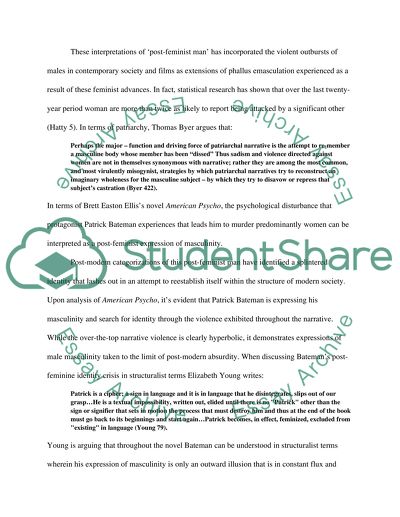Cite this document
(Expressions of Masculinity Essay Example | Topics and Well Written Essays - 2500 words, n.d.)
Expressions of Masculinity Essay Example | Topics and Well Written Essays - 2500 words. Retrieved from https://studentshare.org/social-science/1561164-contested-masculinities
Expressions of Masculinity Essay Example | Topics and Well Written Essays - 2500 words. Retrieved from https://studentshare.org/social-science/1561164-contested-masculinities
(Expressions of Masculinity Essay Example | Topics and Well Written Essays - 2500 Words)
Expressions of Masculinity Essay Example | Topics and Well Written Essays - 2500 Words. https://studentshare.org/social-science/1561164-contested-masculinities.
Expressions of Masculinity Essay Example | Topics and Well Written Essays - 2500 Words. https://studentshare.org/social-science/1561164-contested-masculinities.
“Expressions of Masculinity Essay Example | Topics and Well Written Essays - 2500 Words”. https://studentshare.org/social-science/1561164-contested-masculinities.


